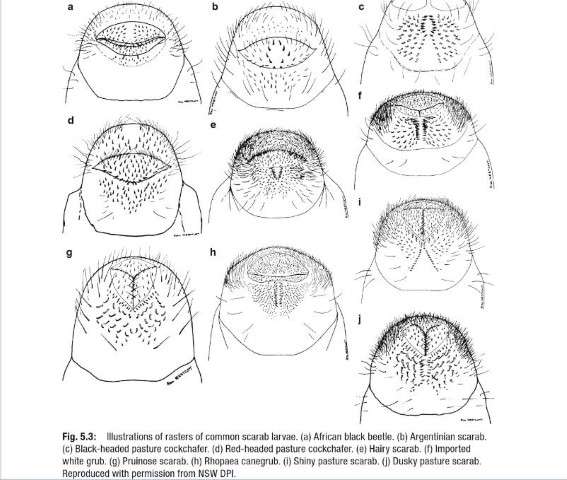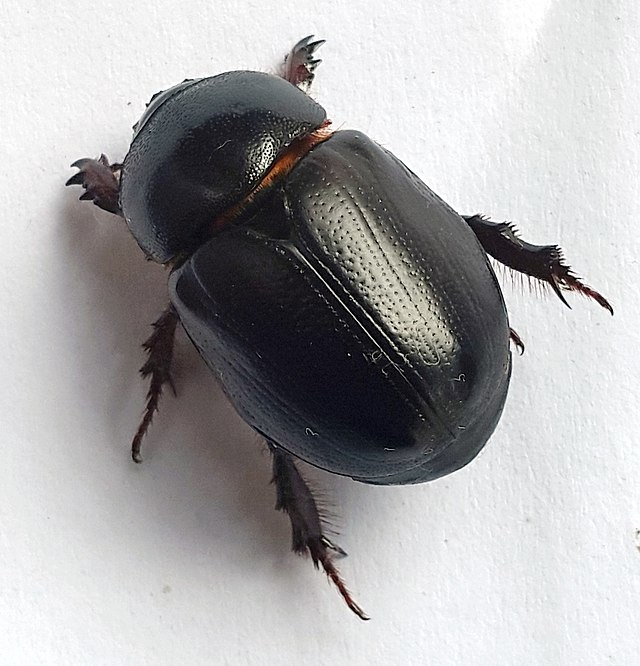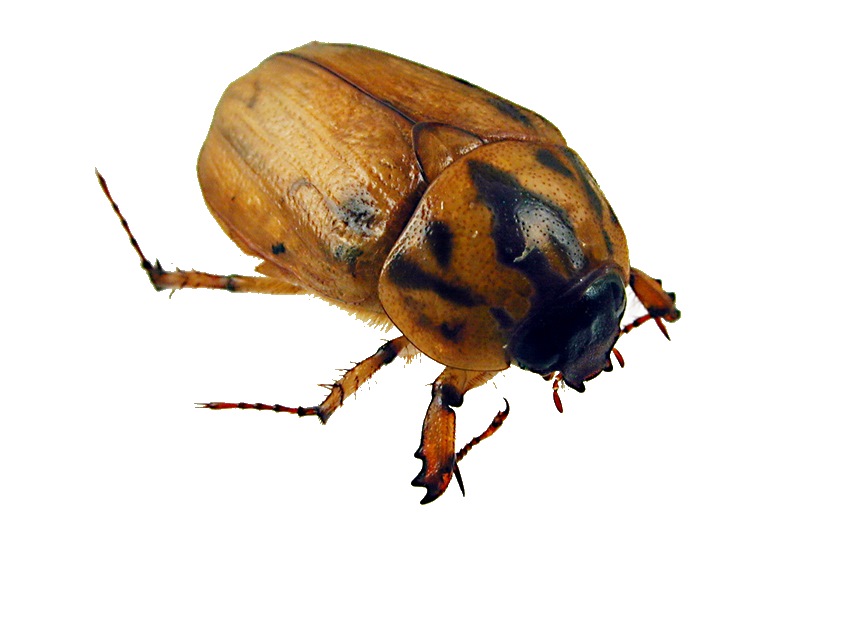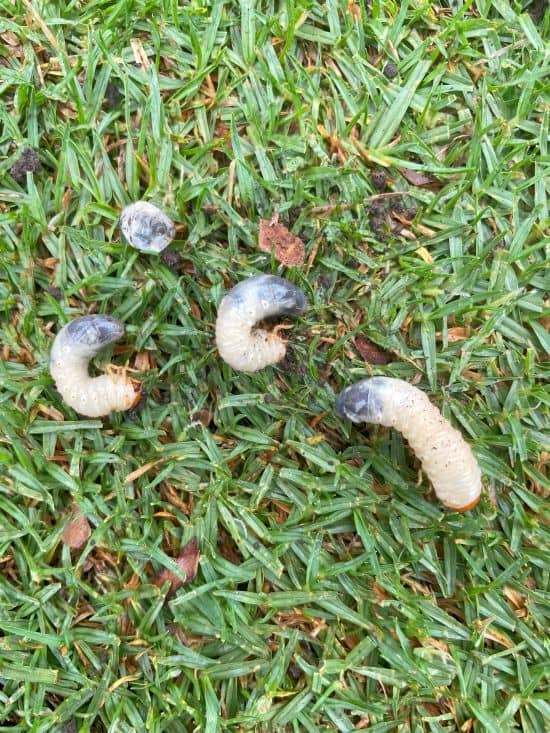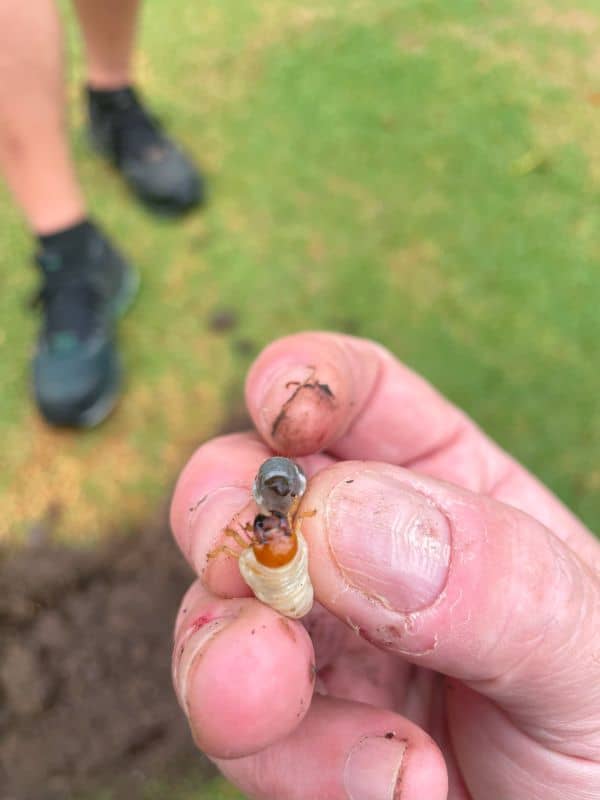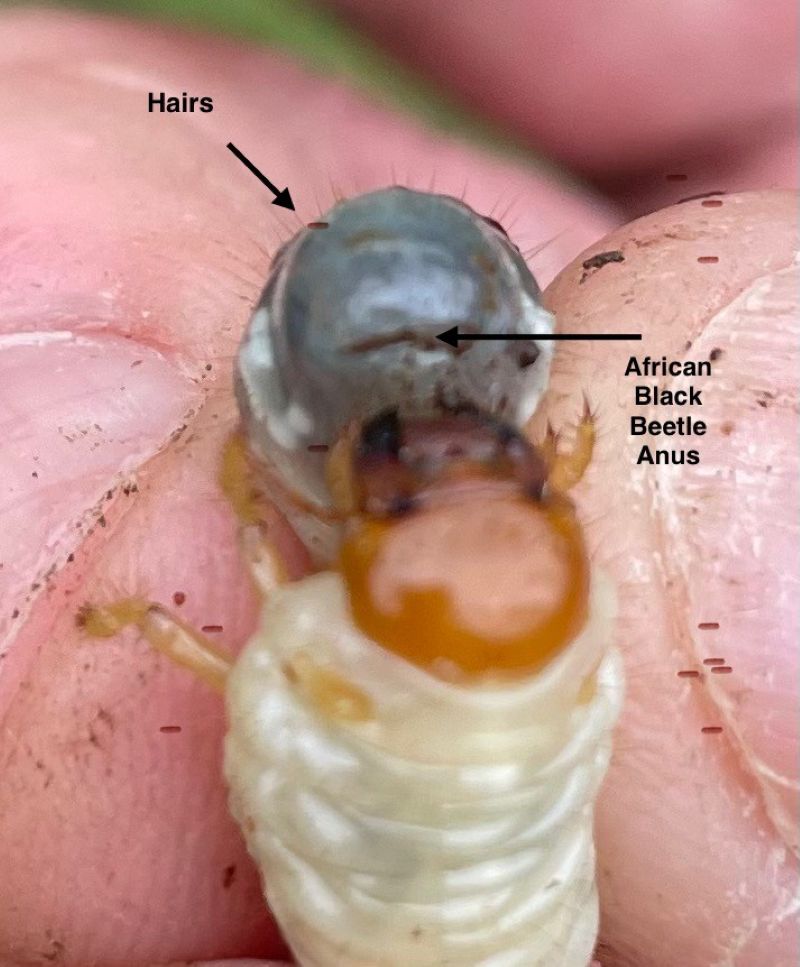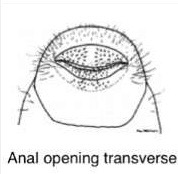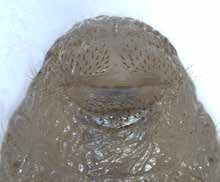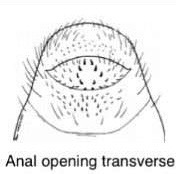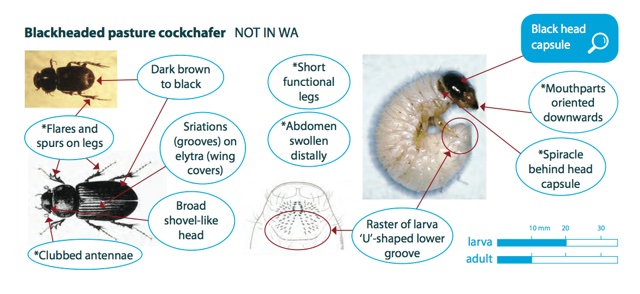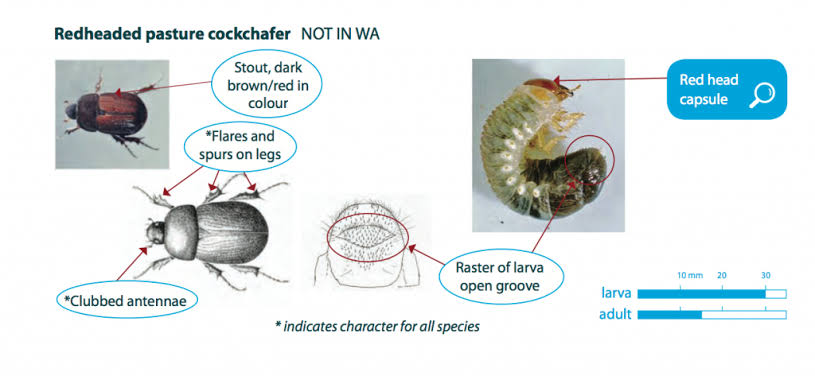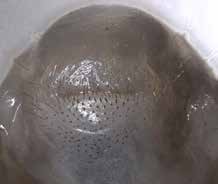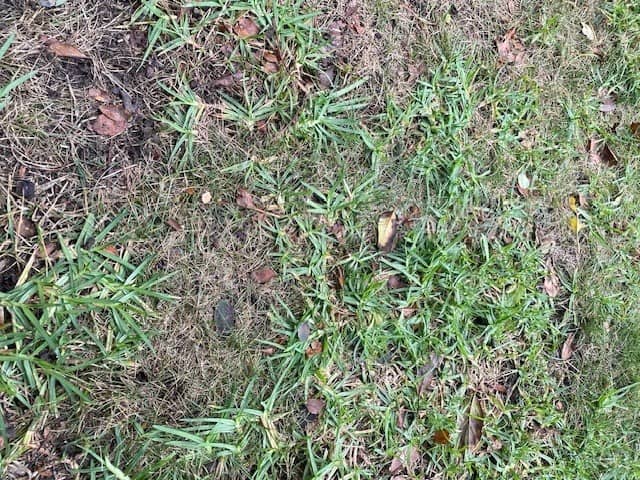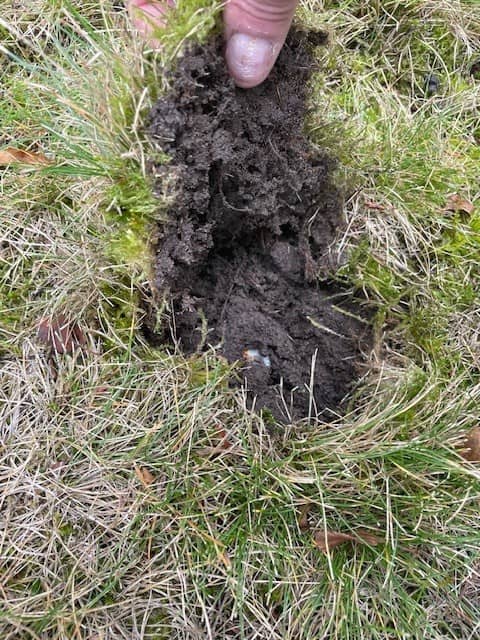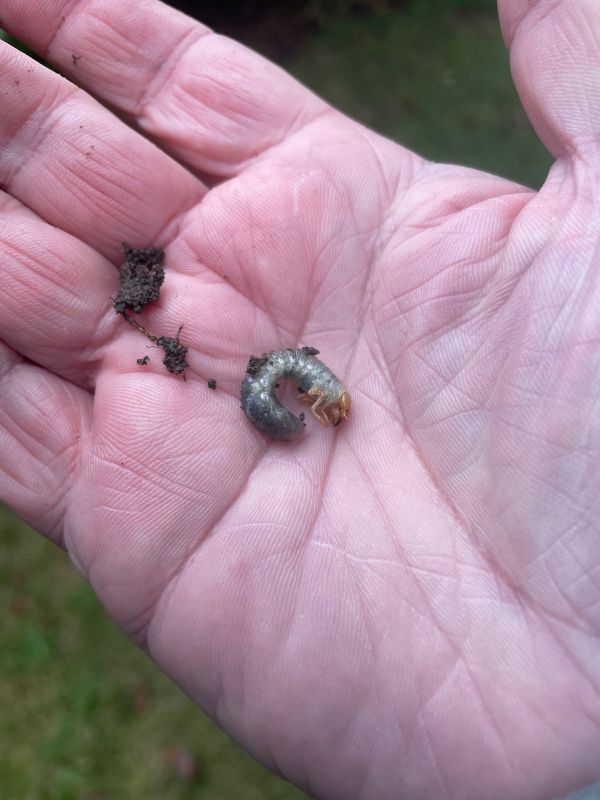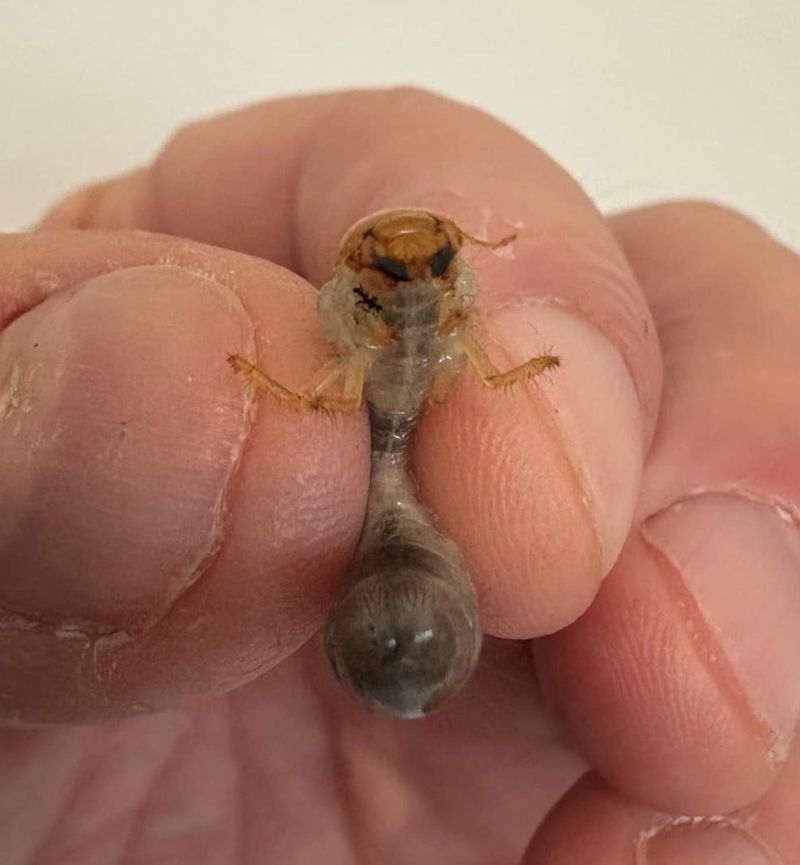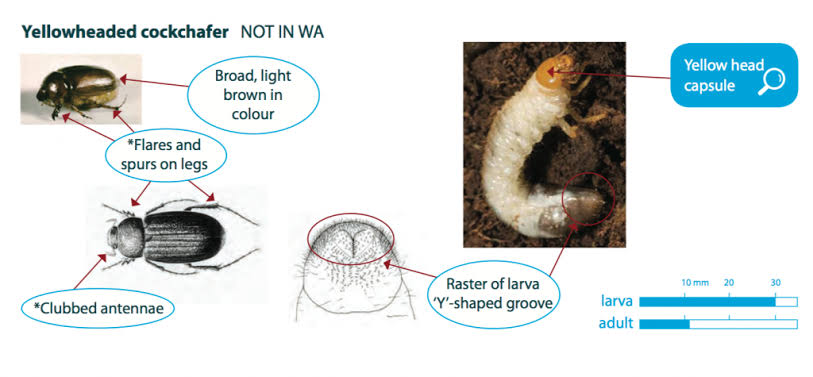Scarab Beetles in Turf.
Sadly, people often class every adult scarab beetle or Curl grub they see as a “bad guy’. This is far from the truth, and every scarab is not necessarily an African Black beetle (ABB) or a Cockchafer.
In fact, there are only a few scarabs that cause damage to turf grass. So rather than going for the spray as soon as you see a beetle, the key is to correctly identify them.
ABB is often mistaken for other scarabs, such as the Red headed, Black headed cockchafer, or Yellow headed cockchafer. This article is an addition to our blog on scarab ID.
After you read this, you will be able to:
- Identify African Black Beetle, Argentine Scarab and Cockchafers.
- Know the lifecycles of African Black Beetle, Argentine Scarab and Cockchafers.
- Know the best cultural and chemical options to African Black Beetle, Argentine Scarab and Cockchafers.
How to Identify Scarab Beetles.
You can tell ABB and Argentine Scarabs from cockchafers by:
- How they behave.
- Their biology and
- Their physical attributes.
The main difference between ABB and other scarabs that damage turf grass, is that both the adults and the larvae of ABB cause damage.
This is in contrast to the Black headed, Red headed cockchafer, and Yellow headed cockchafer where only the larvae cause any damage.
Therefore, if you find adult scarabs, and there is stem damage below or just above the soil surface, ABB is a likely a suspect.
African Black Beetle.
African black beetle (ABB) are found in WA, SA, VIC, NSW, and QLD but it has not been seen in Tasmania.
Historically ABB is a major pest of turfgrass and lawns, and you often find it in ryegrass, paspalum, and Kikuyu turf.
The climate affects ABB activity. Warm Springs favour this pest, with soil temperatures of 20 to 25°C being ideal for larval growth. Soil temperatures below 15°C, and high soil moisture both have a negative impact on its development1King, P.D.; Mercer, C.F.; Meekings, J.S. 1981c. Ecology of black beetle, Heteronychus arator (Coleoptera: Scarabaeidae) – influence of temperature on feeding, growth, and survival of the larvae. New Zealand Journal of Zoology 8: 113-117..
ABB larvae have a brown head, six legs, and a grey, ‘C-shaped’ body. As the scarab larvae mature the body changes from grey to a cream colour.
When they hatch the larvae are around 5 mm long. They then grow to around 25 mm in length. The larvae damage turf and lawns as they prune or completely chew off grass roots. In severe cases you can roll the turf back like a carpet.
African Black Beetle Life Cycle.
ABB has a one year life cycle. In the Spring, adult beetles lay their eggs in the soil, and the larvae then emerge 2 to 5 weeks later. Their time of emergence depends on the soil temperature. By around mid January to early March they are at their most damaging stage (third instar).
After they pupate in the soil the larvae then emerge as adults. They then continue to feed through the Autumn, Winter and Spring.
As soon as the adults emerge, they take flight, rather than walk across the ground. It is not known whether these flights are to relatively close areas or are migrations.
The reason we know this is due to the high numbers caught in light traps in comparison to pitfall traps that only catch walking scarab beetles.
It is not known what other conditions attract the flying adults to land at a particular spot.
Thanks to Wikipedia, Ian Faithful, from the Department of Environment and Primary Industries, Ecogrow Australia, Cesar Australia and Agriculture Victoria for the images
Argentinian Scarab (Cyclocephala signaticollis).
This scarab is similar in size and shape to the African Black Beetle. The Argentine Scarab has a mid-tan colour, with subtle striping on its hard outer wing cover. The larvae are up to 25 mm long and have a white to creamy colour.
Scarab Beetle Life Cycle
The Argentinian Scarab has a one year lifecycle, which is 2 to 4 weeks as eggs, 10 to 11 months as larvae, 4to 5 days as pupae, and 1 to 4 weeks as adults.
Adults emerge from the pupal stage at the start of the Summer, once soil temperatures start to increase. After they mate, females burrow into the soil, and deposit eggs in the upper soil profile in late December to early January.
The eggs hatch 2 to 4 weeks after this, and scarab beetle larvae then begin to feed on turf roots. Within several weeds these larvae reach the 3rd instar. In about May or June the 3rd instar larvae begin to move underground for the Winter.
Black headed Cockchafer.
Black headed cockchafers adults lay their eggs between January and February, and have a one year life cycle. The larvae emerge after 3 to 4 weeks, and reach the most damaging third instar larval stage in the late Autumn and Winter.
The larvae pupate in the Spring and the adults then emerge in the mid-late Summer.
A good way to differentiate this scarab, is if you handle them they move off pretty quickly (within a minute) from your hand. This contrasts with Red headed cockchafers that tend to stay in the classic curl grub “C” shape for several minutes.
Unlike Red headed cockchafers, Black headed cockchafer larvae come to the surface to feed, and are a good target for synthetic insecticides like Tempo Xtra.
Red headed Cockchafer.
The Red headed cockchafer has a two-year life cycle. It is a pest in its larval stages and feeds on the roots and organic matter found below the surface.
It is common in the high rainfall areas (>500mm per annum) of the south-eastern states including the ACT and Canberra2Berg, G., Faithfull, I.G., Powell, K.S., Bruce, R.J., Williams, D.G. and Yen, A.L. (2014), Redheaded pasture cockchafer. Austral Entomology, 53: 144-158. https://doi.org/10.1111/aen.12062.
In their first year, in the late Summer to mid-Autumn, Red headed cockchafer adults emerge from pupae. It isn’t until August to October that they emerge from the soil to take flight and lay eggs.
The eggs hatch in the late Spring and the larvae reach the most damaging third instar stage by early Autumn in the second year. They cause most damage from March to June until the Winter temperatures hinder larval activity.
Further damage occurs from late August to December until pupation occurs.
It is a highly destructive pest when population levels exceed 70 /m23Mickan, F. (2008). The Redheaded Pasture Cockchafer, Department of Primary Industries, Melbourne, Victoria, Agnote 1358. . At levels above 700 /m2 it can completely destroy pastures and turf areas4Rath, A.C., & Pearn, S.G. (1993). Development of economic control of the root-feeding cockchafer, Adoryphorus couloni (Coleoptera: Scarabaeidae) with the fungus Metarhizium anisopliae. In: Pests of Pastures. Weed, Invertebrate and Disease Pests of Australian Sheep Pastures (CSIRO Information Services: Melbourne), E.S. Delfosse (Ed.), 332-336. .
Yellow headed Cockchafers.
There are multiple Yellow headed Cockchafer scarabs. While their life cycles are largely unknown, they are thought to reach the most damaging third instar larval stage in the Winter.
It is thought that they have a 2 year life cycle. They appear to favour thin, short rooted grass species, like bent and fescue. In the image below they have destroyed the fine leaved fescue and not touched the Kikuyu grass.
How to Control Scarab Beetle.
You can control Scarabs and Curl Grub by cultural and chemical means.
Anal Opening.
All Scarab larvae have an anal opening at their rear end, which you can see with a hand lens.
With ABB and red headed cockchafers, this is a horizontal split. With the larvae of Yellow headed and Black headed cockchafers the anal opening is in a Y shape.
Head capsule.
The head capsule of ABB curl grub larvae is mostly brown. This contrasts with the red headed, yellow headed and black headed cockchafers that have head capsules that correspond to their common names.
However, do not use the head capsule colour alone to distinguish ABB from other scarabs. This is due to peoples colour perception varying, and variations in colour between individuals of the same species.
As well as differences in colour, the Red headed Pasture Cockchafer has small pit marks on its head, whereas ABB has a smooth head capsule.
Monitoring and Control of Scarabs.
In the not too distant past you had few options to control curl grubs. Now there are several very effective options to choose from.
Whichever strategy you adopt, the first stage is to reduce the risk of damage threshold levels being reached.
Endophytes.
Try and use high endophyte ryegrass varieties like Intense PRG, as these deter Scarabs like African Black Beetle. An endophyte is a fungus that lives in a host plant, and produces alkaloids which deter insets.
Fairways and sports grounds dominated by high endophyte grasses have low levels of egg laying by adults. This in turn leads to less larval damage.
Manage soil pH.
Aim to keep the soil pH around 6 as this helps reduce curl grub numbers.This does not however, prevent damaging populations of Scarab larvae from occurring.
Biological Control.
A Research Initiative of the Victorian Golf Association in 2001 shows that Entomopathogenic Nematode (EN) Heterorhabditis spp, give excellent efficacy (100% control) of Scarab larvae.
Control of Scarab Beetle.
In the past there were limited options to control curl grubs. Now most turf managers use options that allow them to use an annual preventative program.
With the majority of current insecticides, timing is the key to get the best results. Ideally you want to start applications for scarabs when you see the adults. This is because the damaging larvae tend to follow 1 to 3 weeks in the future.
However, if you don’t do this, then the first stage is to reduce the risk of damage threshold levels being reached.
Scarab Beetle Thresholds.
There are two ways to determine if larvae numbers are a problem.
- If birds rip up turf to get to the larvae then you need to spray.
- Dig some random sample holes across the site. Use a spade to dig down to 10 to 20 cm across your site. If you count 3 larvae per spade square then this is roughly equivalent to 75 larvae per m2.
- Always remember that for if you irrigate your turf you can increase these thresholds by 25 to 30%.
| Pest | Threshold/m2 |
| African Black Beetle | 10 |
| Red headed pasture cockchafer | 70 |
| Black Headed cockchafer | 30 |
| Yellow Headed cockchafer | 30 |
Non Chemical Control.
If you apply beneficial nematodes at the right time these are a very effective way to control Scarab larvae. You water these into the soil, and the turf/soil must be kept moist for 48 hours afterwards.
Chemical Control of Scarab Beetle.
Preventative.
There are several chemicals that you can use for preventative control. All of these should all be part of an insecticide resistance strategy.
Amongst these are:
- chlorantraniliprole (Acelepryn).
- Imidacloprid (ProForce Recruit 200SC).
- Scarlet Trio Insecticide and
- Tetraniliprole (Tetrino Insecticide).
- Another option to consider the use of Echelon Duo. This has the advantage of being an all in one fertilizer, insecticide and herbicide in one application.
Curative.
If you do have a problem with Scarab larvae that cause damage then you may need to carry out curative control.
Imidacloprid (Recruit 200SC) does work on small curl grubs but if they are too big they tend to build up fatty deposits which means you will have limited success. In this case your best option is Tempo Xtra.
Red headed Cockchafer.
There are currently no synthetic pesticides registered for use against the Red Headed Cockchafer.
References
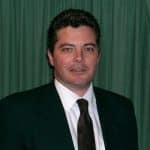
Jerry Spencer
Jerry has an Hons Degree in Soil Science (1988) from Newcastle Upon Tyne University. He then worked as a turf agronomist for the Sports Turf Research Institute (STRI) until 1993.
He gained a Grad Dip in Business Management from UTS in 1999. He has held a number of technical roles for companies such as Arthur Yates (Commercial Technical Manager) and Paton Fertilizers (Organic, turf specialty and controlled release fertiliser) portfolios.
In 2013 he established Gilba Solutions as independent sports turf consultants and turf agronomists. Jerry has written over 100 articles and two books on a wide range of topics such as Turf Pesticides and turfgrass Nutrition which have been published in Australia and overseas.

